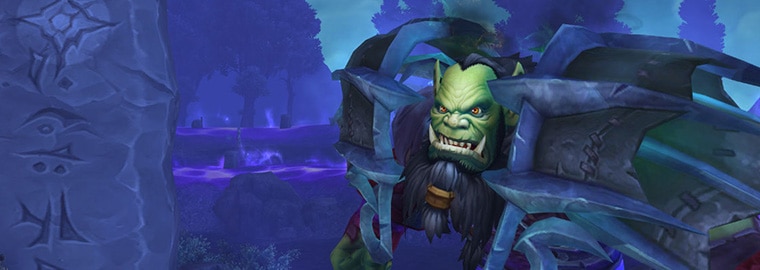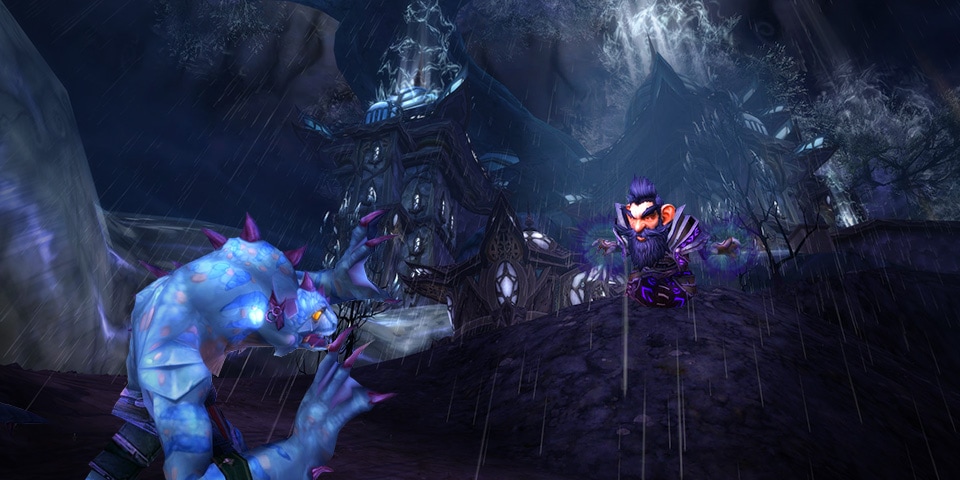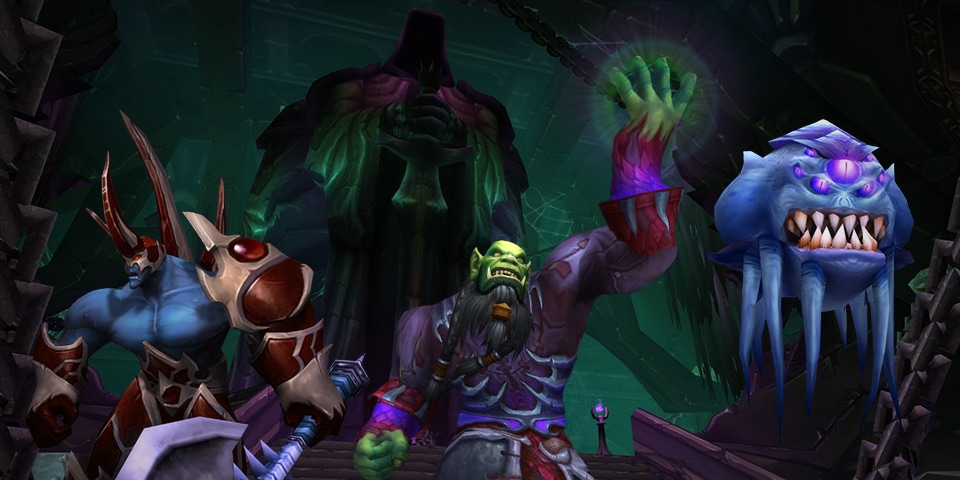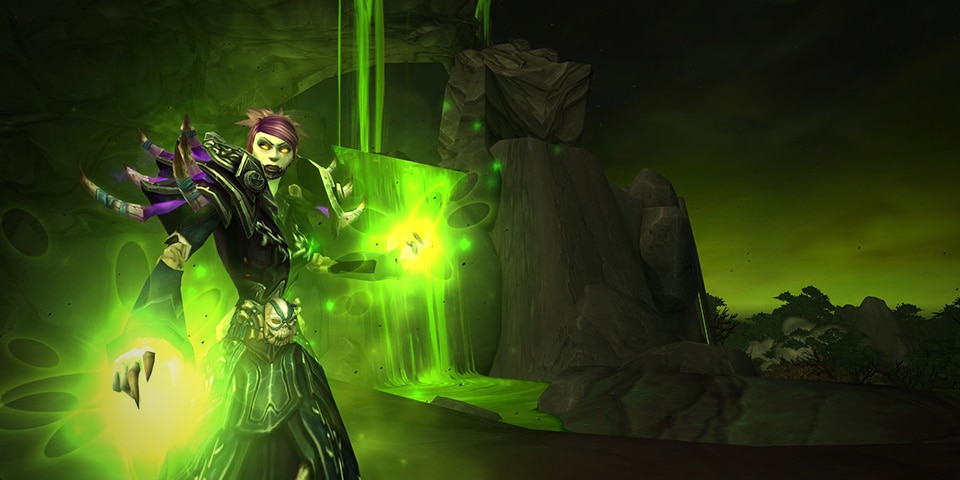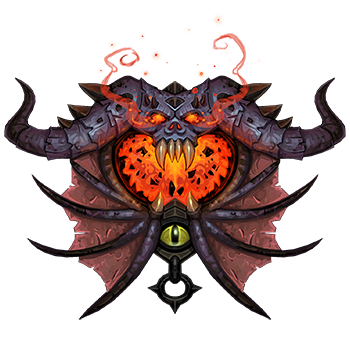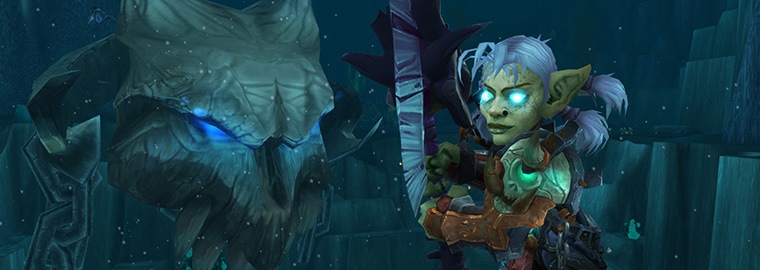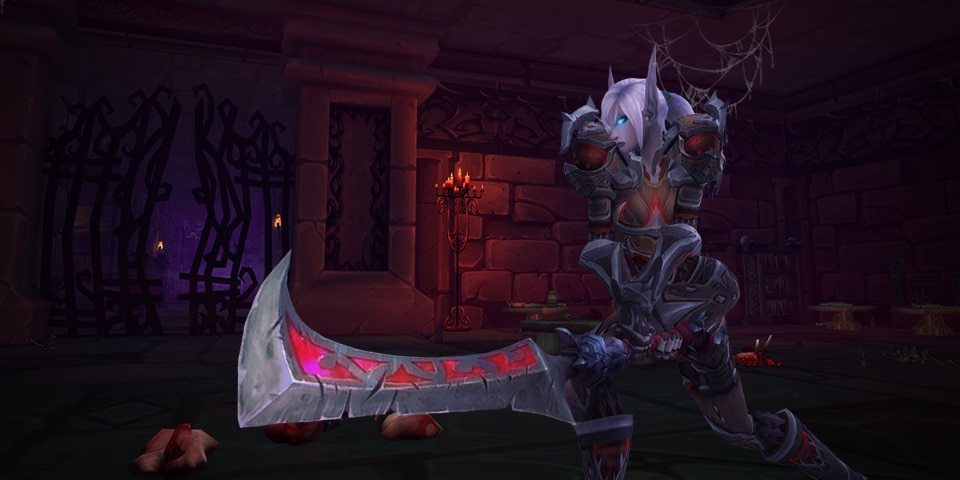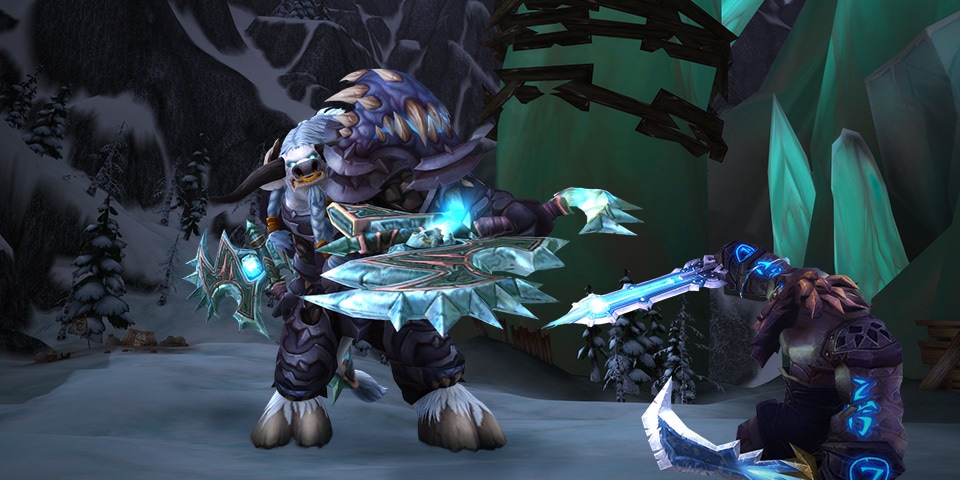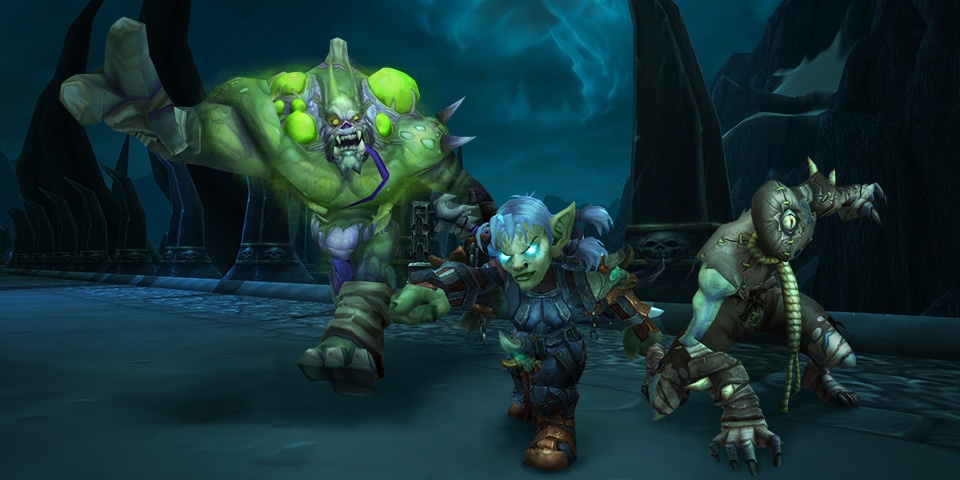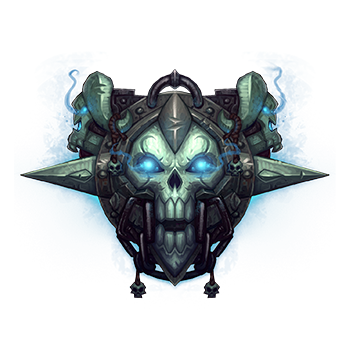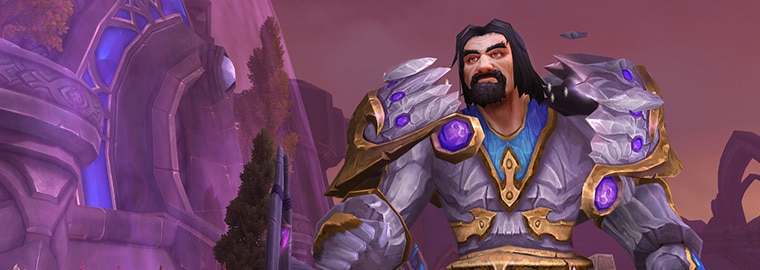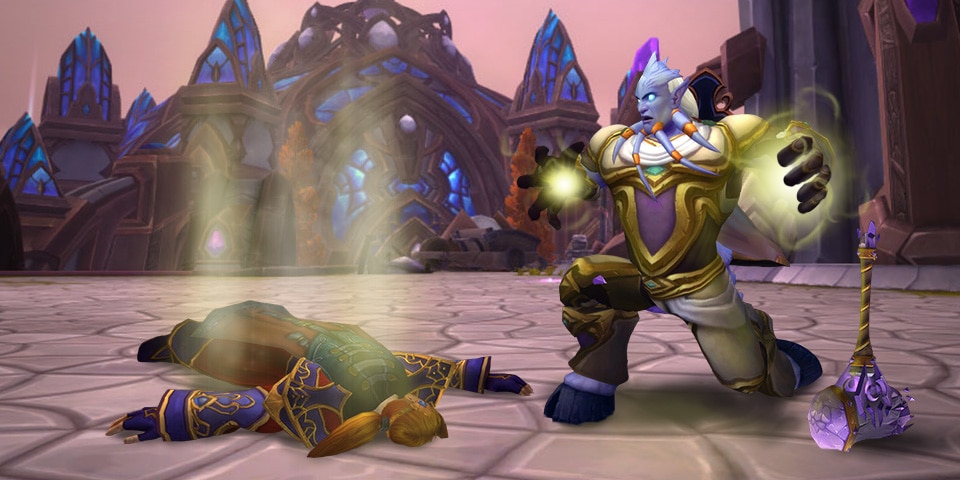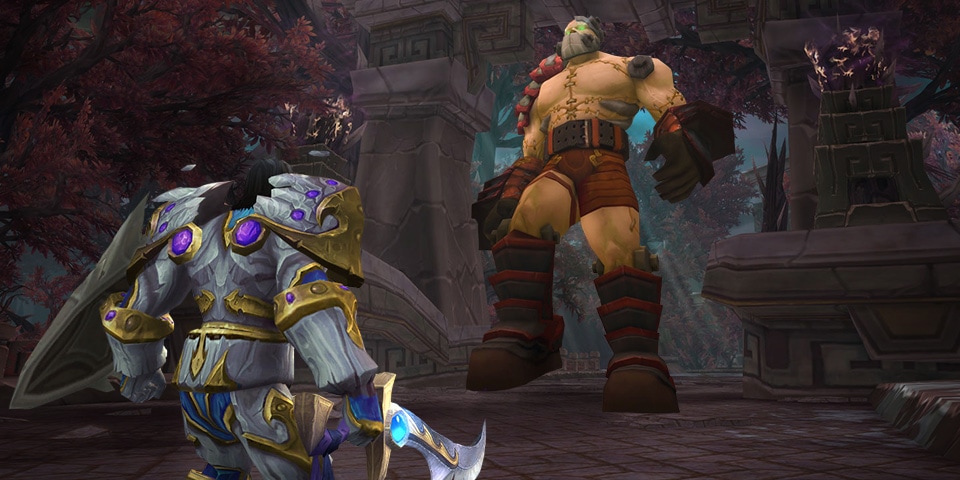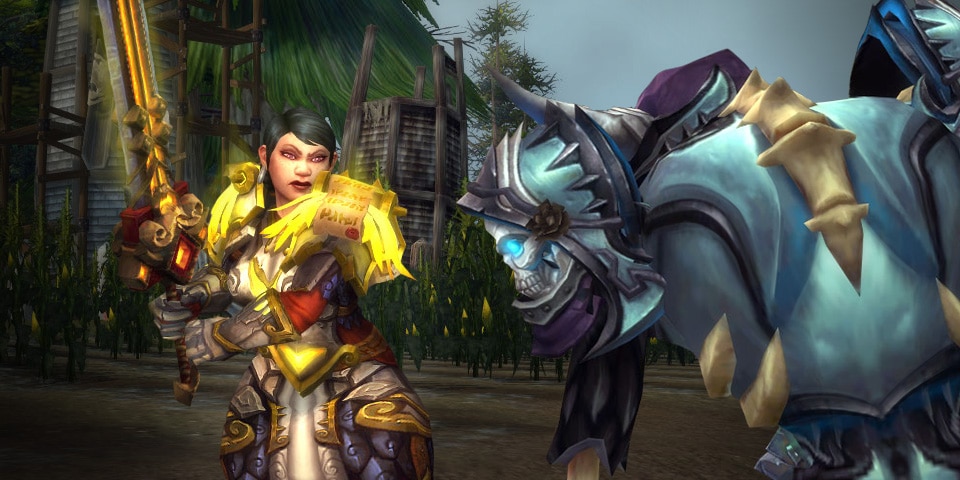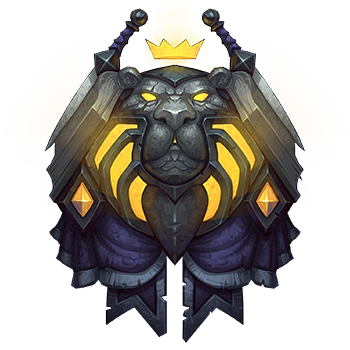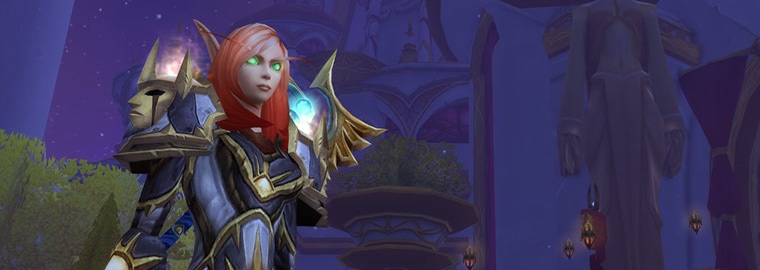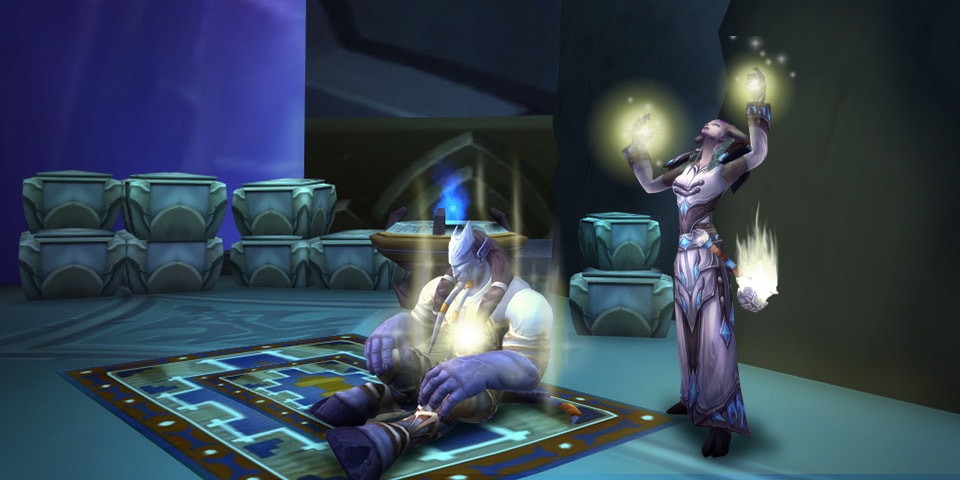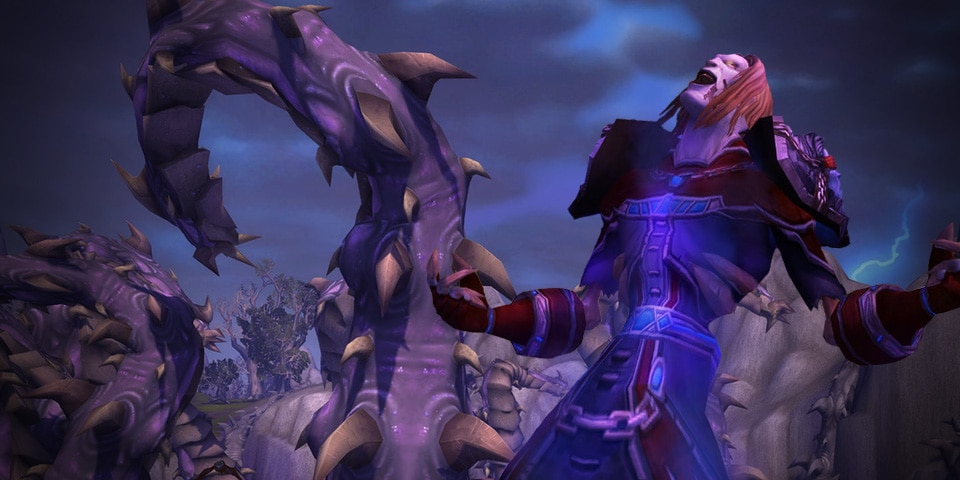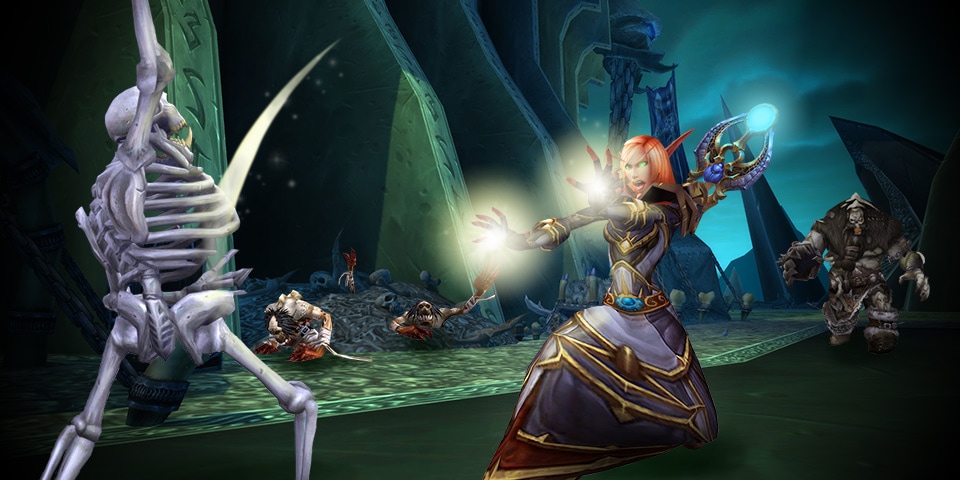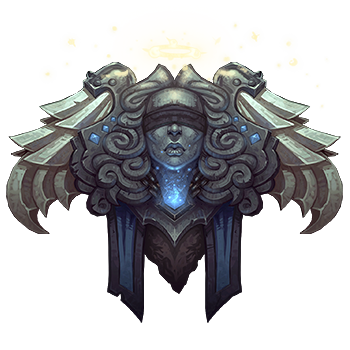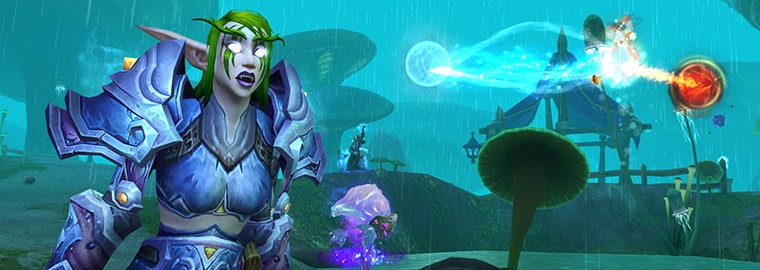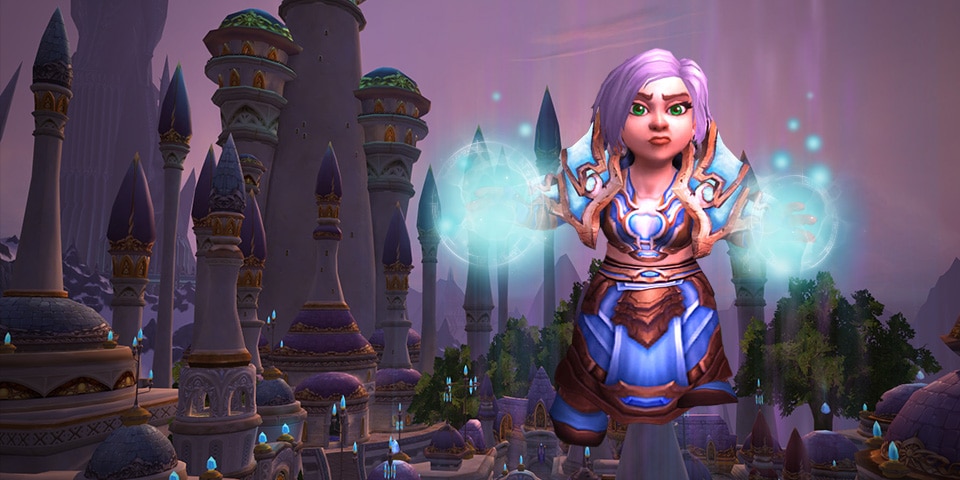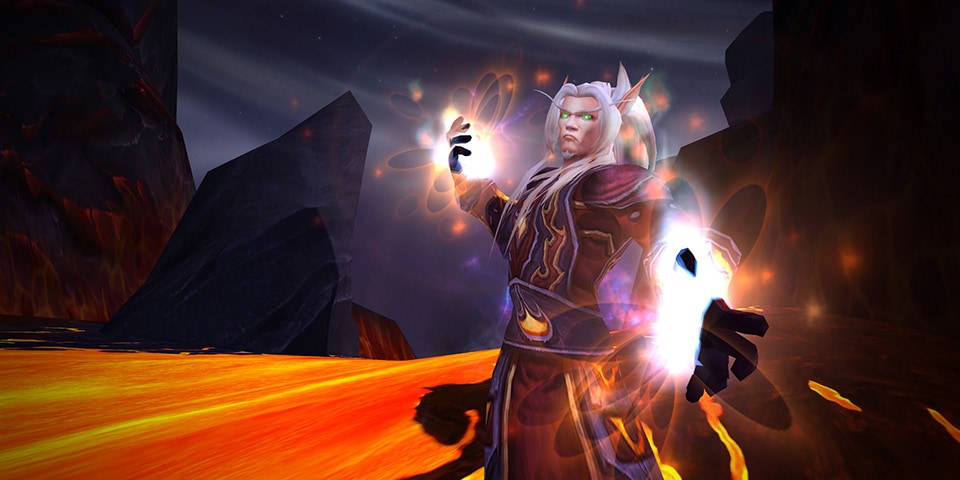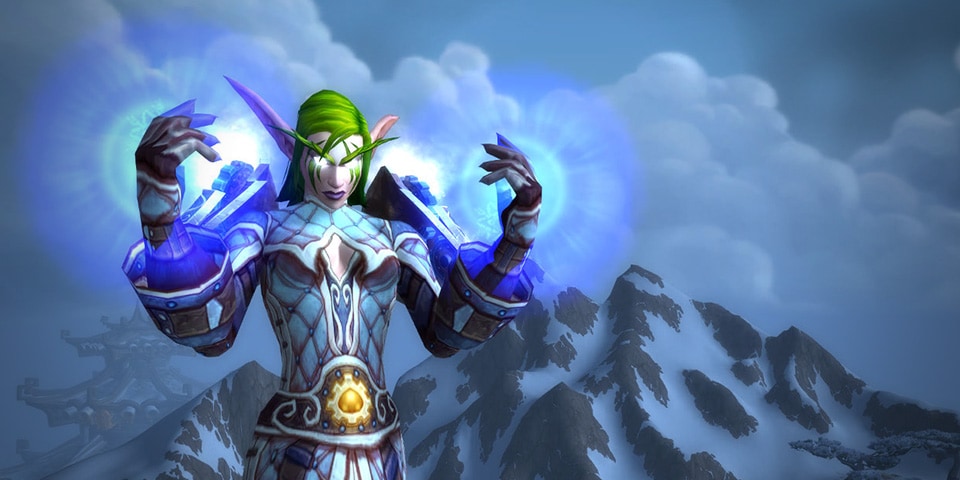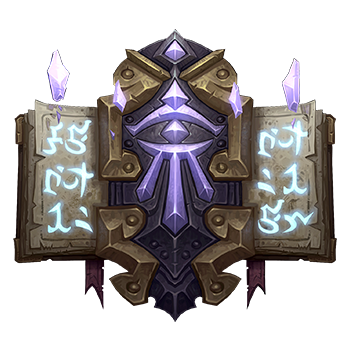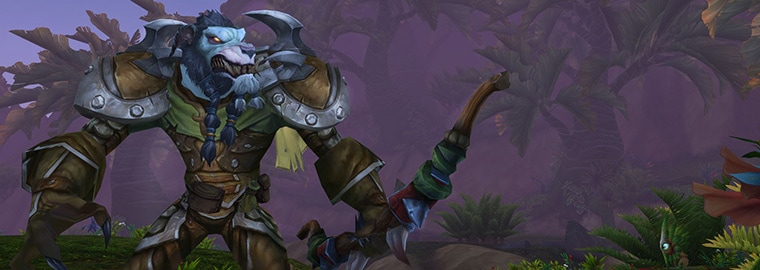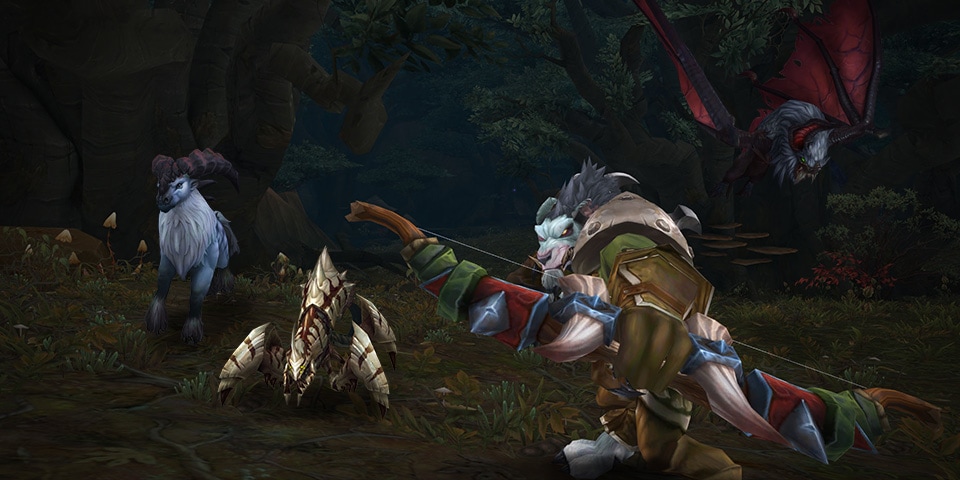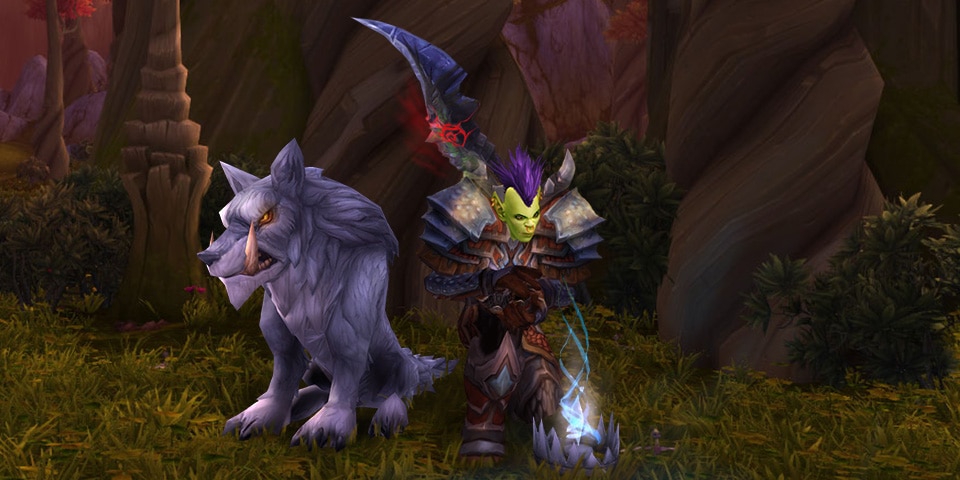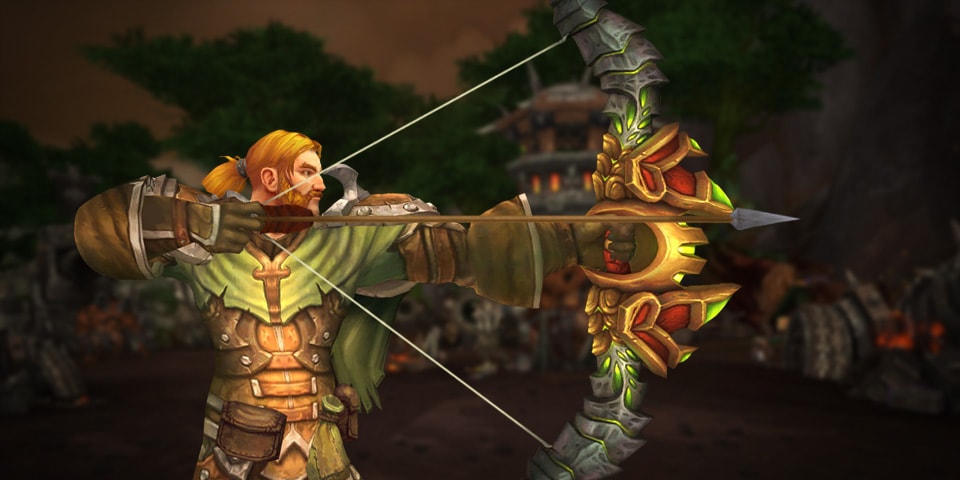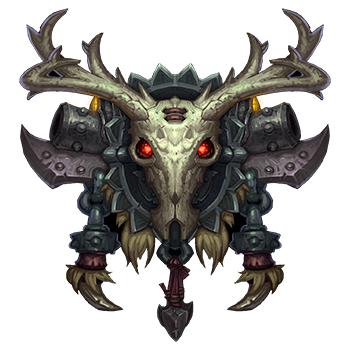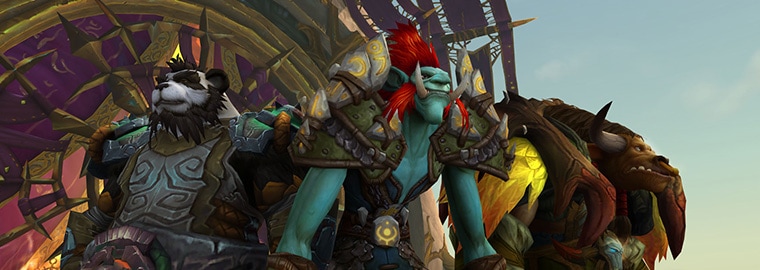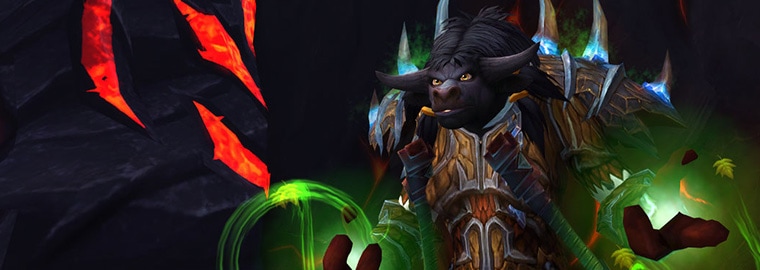

Welcome to our World of Warcraft: Legion class preview series. In this entry, we’re exploring the Shaman—to find out what’s in store for a different class, check out the overview.
We continue our early look at class and specialization design with the Shaman. In these blogs, we’ll be exploring class identity, discussing Legion’s new designs, and presenting core combat abilities for each specialization—laying out the foundation upon which talents and Artifacts will build further. With that in mind, let’s delve into what it means to be a Shaman in World of Warcraft.
For millennia, since the primitive tribal cultures of Azeroth and Draenor, the natural elements of the physical universe have been celebrated, feared, and even worshipped. Mystics sought communion with the earth, air, fire, and water, and learned to tap into their raw power. In time, these spiritual guides came to understand that nature’s elemental forces aren’t wholly benevolent, but have, in fact, been locked in an unending conflict of chaos and primal fury that once consumed the physical realm. So began the calling of the Shaman, to bring balance to these volatile energies, leveraging their intensity to mend wounds . . . or inflict them.
The use of totems is integral to the Shaman archetype, and we’re addressing some persistent issues with their mechanics. For a long time there have been significant constraints associated with totems, like the fact that they can only be dropped at the Shaman’s feet, or that they only have 5 health, or that no more than one of the same elemental type can be active at one time. While these constraints were intended to ensure that totems felt unique, they ultimately drove us to creating strange tools to allow the Shaman to bypass such constraints, such as Totemic Projection or Totemic Persistence. In Legion, we’re eliminating this awkwardness and simply removing the constraints.
Totems of the same nature type can now be summoned together, allowing you to have Healing Stream Totem and Healing Tide Totem up at the same time. Elementals are no longer tied to totems, but are guardians that follow and assist you. Totems’ maximum health will always equal a percentage of your maximum health. In addition, totems that need to be placed at a specific location will be directly placed using a targeting reticle. If you want to place Earthgrab Totem in the middle of a big pack of nasty orcs, you can do that without having to run into that nastiness or use a separate spell to throw the totem there. In general, totem mechanics are concentrated around temporary effects (either beneficial or hostile) in a localized area, as opposed to “maintenance buff” cooldowns you need to make sure are up at all times.
Finally, we’re bringing needed clarity to Shaman resources, particularly to move away from disguising a couple key resources as buffs. Lightning Shield charges for Elemental Shaman, Maelstrom Weapon charges for Enhancement Shaman, and Mana have all been replaced for Elemental and Enhancement with a new resource: Maelstrom. Mana is a fitting Restoration Shaman resource and will remain for that spec.
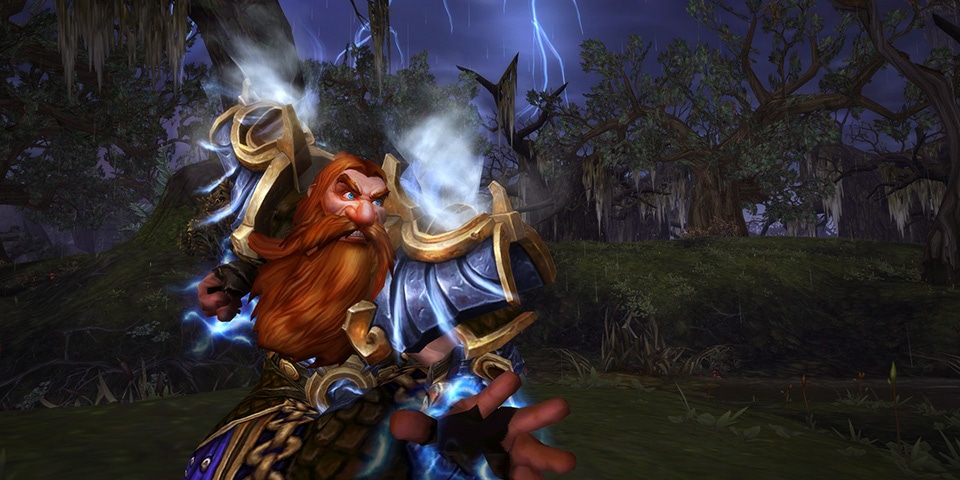

Elemental
Certain shaman have dedicated themselves above all else to forging a deep bond with the elements. They have peered beyond the Elemental Plane, gleaning visions of an ancient past where manifestations of volatile energies once raged unimpeded across primordial Azeroth. Through careful study and dedication, the elemental shaman is able to channel such power into destructive magical surges. Through the body of the shaman flows bolts of lightning, as if from storm, and bursts of fire, as if from molten earth. They manipulate the land itself and summon spirits of earth, fire, and storm to their aid. To battle an elemental shaman is to taunt the very forces of nature.
“Through the body of the shaman flows bolts of lightning, as if from storm, and bursts of fire, as if from molten earth”
Gameplay
Elemental Shaman already have a strong, thematic ability repertoire. We’re retaining much of that existing gameplay in Legion, while smoothing the rough edges. The previously mentioned switch to Maelstrom as a resource is most significant. Elemental Shaman will build Maelstrom through their Lightning Bolt, Lava Burst, and Chain Lightning, and spend it on abilities like Shocks and Earthquake. This change also allows us to remove the cooldown on Shocks, since they instead compete for resources. Shock usage is now more flexible for Elemental Shaman, such as using more of their Maelstrom on Flame Shock to DoT multiple targets. Another notable change is the return of Elemental Overload as their Mastery; Molten Earth never lived up to our hopes, being too non-interactive and confusing.
To give you an idea of the Elemental Shaman in action, here’s a basic look at their core combat abilities:
- Lightning Bolt
- 40 yd range, 2 sec cast
- Fires a bolt of lightning at the target, dealing moderate Nature damage, and generating 15 Maelstrom.
- Lava Burst
- 40 yd range, 2 sec cast, 8 sec cooldown
- Hurl molten lava at the target, dealing strong Fire damage. If your Flame Shock is on the target, Lava Burst will deal 50% additional damage. Generates 15 Maelstom.
- Flame Shock
- 0 to 20 Maelstrom, 45 yd range, Instant
- Sears the target with fire, causing minor Fire damage and then an additional minor Fire damage every 2 sec. Lasts 10 to 30 sec based on Maelstrom spent.
- Earth Shock
- 10 to 100 Maelstrom, 45 yd range, Instant
- Instantly shocks the target with concussive force, causing massive Nature damage, based on Maelstrom spent.
- Lava Surge
- Passive
- Your Flame Shock damage over time has a chance to reset the cooldown of Lava Burst and cause your next Lava Burst to be instant.
- Mastery: Elemental Overload
- Grants a 40% (with Mastery from typical gear) chance for Elemental Overload to occur. Elemental Overload causes a Lightning Bolt, Chain lightning, or Lava Burst spell you cast to trigger a second, similar spell on the same target that causes 75% of normal damage and Maelstrom generation, and no threat.
Additionally, to provide a glimpse at how some talents may build upon this, here’s one example of an Elemental-specific talent:
- Maelstrom Totem
- 40 yd range, Instant, 30 sec cooldown
- Summons a Maelstrom Totem near the target for 15 sec that repeatedly attacks an enemy within 30 yards for moderate Nature damage. Every time the Maelstrom Totem attacks, it will generate 5 Maelstrom for you.
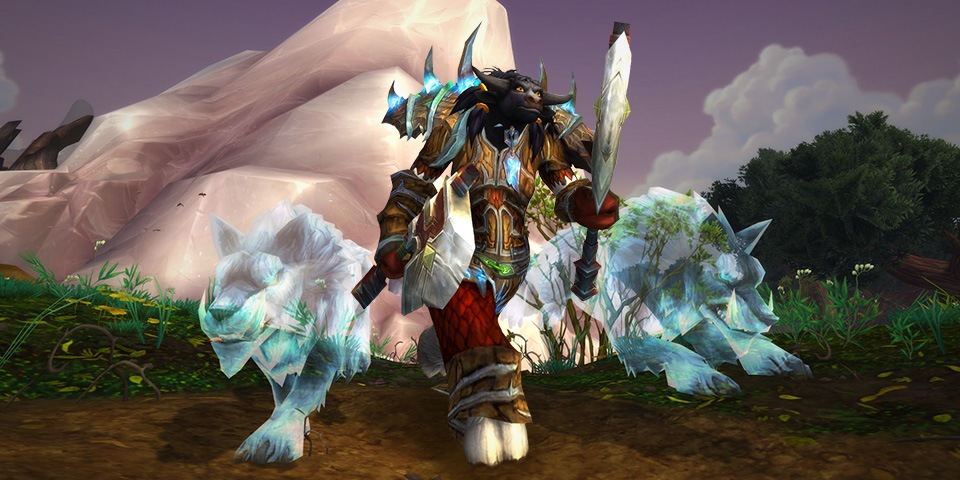

Enhancement
Intense communion with fire, earth, air, and water isn’t exclusive to the elemental shaman. In many ways, enhancement shaman similarly bond with nature and leverage its power on the battlefield. What distinguishes them in their training—and in their connection with the elements—is their combat methodology. These shaman favor empowering their physical attacks with elemental energies and facing their adversaries up close. They don’t shy from the frontlines, wielding magically augmented weapons, potent elemental attacks, and totems that shape the tide of battle.
“These shaman favor empowering their physical attacks with elemental energies and facing their adversaries up close”
Gameplay
The identity of the Enhancement Shaman is cool, but we don’t feel that the mechanics do well to establish that. We want this spec to be more than a melee-range Elemental Shaman, while having a distinct “Battle Mage” feel. Enhancement’s niche focuses on dishing out devastating spells and punishing strikes at melee range to destroy their enemy. Rather than leaving you with a multitude of buttons, many of which are inconsequential, we’re emphasizing empowering your weapons and allies in the fray. Enhancement Shaman become increasingly deadly as they build their power through Maelstrom generation. They must be careful not to let it overflow, while maintaining enough to utilize their most dominant attacks at critical moments.
To give you an idea of the Enhancement Shaman in action, here’s a basic look at their core combat abilities:
- Rockbiter
- 10 yd range, Instant
- Assault your target with earthen power, dealing moderate Nature damage, and generating 15 Maelstrom.
- Flametongue
- 10 yd range, Instant, 12 sec cooldown
- Scorch your target with fiery power, dealing moderate Fire damage, and enhancing your weapons.
- Each of your weapon attacks cause up to minor additional Fire damage, based on weapon speed. Lasts 16 sec.
- Windfury
- Passive
- Each of your main-hand attacks has a 7% chance of triggering three extra attacks, dealing minor Physical damage.
- Lava Lash
- 30 Maelstrom, Melee Range, Instant
- Charge your off-hand weapon with lava and strike your target, dealing strong Fire damage.
- Stormstrike
- 60 Maelstrom, Melee Range, Instant, 16 sec cooldown
- Energize your weapons with lightning and deliver a massive blow to your target, dealing heavy Physical damage.
- Maelstrom Weapon
- Passive
- When you deal damage with a melee weapon, you generate 5 Maelstrom.
- Stormfury
- Passive
- Each of your attacks has a 2% chance to cause Stormfury, resetting the cooldown on Stormstrike, and causing your next Stormstrike to cost 50% less Maelstrom and to trigger no cooldown.
- Mastery: Enhanced Elements
- Increases the chance for Stormfury and Windfury to trigger by 5% (with Mastery from typical gear), and increases all Fire and Nature damage done by 40% (with Mastery from typical gear).
Additionally, to provide a glimpse at how some talents may build upon this, here’s one example of an Enhancement-specific talent:
- Sundering
- 60 Maelstrom, Instant, 20 sec cooldown
- Shatter a line of earth before you, causing strong Physical damage and knocking enemies to the side.
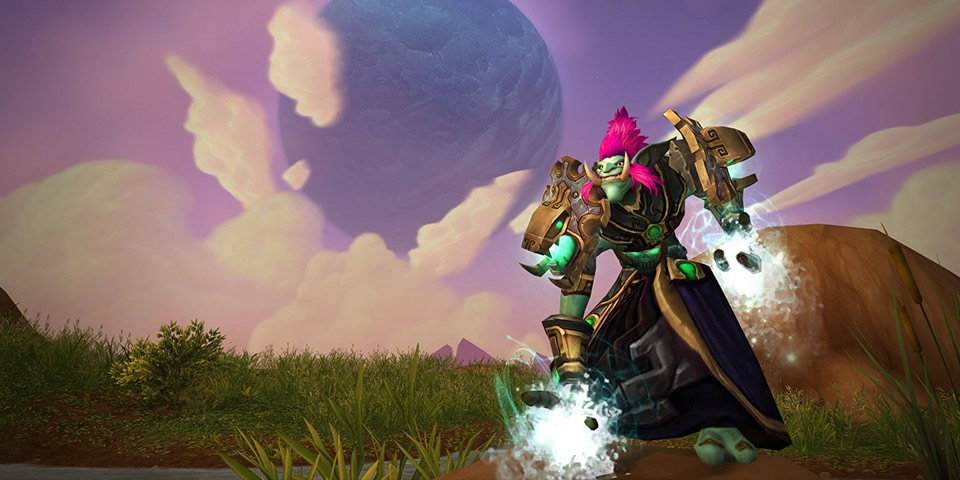

Restoration
Some shaman find a serene affinity for the restorative properties of water. These shaman do not necessarily seek the Light or turn to the divine, yet they feel a profound spiritual connection with the source from which all mortal life took root. So strong is their connection with water that the shaman is able to restore life and heal afflictions. They balance this with a command of the other elements, finding harmony in nature and purifying their allies as a tidal surge washes across a sandy shore.
“Restoration shaman feel a profound spiritual connection with the source from which all mortal life took root”
Gameplay
Restoration mechanics are informed well by the themes of the spec, and we want to avoid disrupting what healers already like about it. What has changed has primarily been in terms of tweaking their gameplay in more fun directions. There’s now slightly more emphasis on targeted healing, and slightly less on Chain Heal spam. We’ve also significantly improved their talents, offering more impactful and varied options. Additionally, Restoration gains the most from the removal of totem restrictions.
To give you an idea of the Restoration Shaman in action, here’s a basic look at their core combat abilities:
- Healing Wave
- 2.1% Mana, 40 yd range, 2.5 sec cast
- A slow but efficient wave of healing energy that restores a moderate amount of a friendly target’s health.
- Healing Surge
- 4.1% Mana, 40 yd range, 1.5 sec cast
- A quick but expensive surge of healing energy that restores a moderate amount of a friendly target’s health.
- Chain Heal
- 5.6% Mana, 40 yd range, 2.5 sec cast
- Heals the friendly target for a moderate amount, then jumps to heal the most injured nearby party or raid members. Healing is reduced by 30% after each jump. Heals 4 total targets.
- Riptide
- 1.5% Mana, 40 yd range, Instant, 6 sec cooldown
- Restorative waters wash over a friendly target, healing them for a moderate amount and an additional moderate amount over 18 sec.
- Healing Rain
- 4.3% Mana, 40 yd range, 2 sec cast, 10 sec cooldown
- Blanket the target area in healing rains, restoring a moderate amount of health to up to 6 allies in the area over 10 sec.
- Healing Stream Totem
- 1.7% Mana, Instant, 30 sec cooldown
- Summons a Water Totem at the feet of the Shaman that heals an injured party or raid member within 40 yards for a minor amount every 2 sec. Lasts 15 sec.
- Tidal Waves
- Passive
- When you cast Chain Heal or Riptide, you gain the Tidal Waves effect, which reduces the cast time of your next Healing Wave by 40% or increases the critical effect chance of your next Healing Surge by 40%. Stacks up to 2 times.
- Mastery: Deep Healing
- Increases the potency of your healing spells by up to 60% (with Mastery from typical gear), based on the current health level of your target (lower health targets are healed for more).
Additionally, to provide a glimpse at how some talents may build upon this, here’s one example of a Restoration-specific talent:
- Wellspring
- 2.4% Mana, 30 yd range, 1.5 sec cast, 12 sec cooldown
- Create a surge of water that flows forward, healing all friendly targets in a wide arc in front of you for a strong amount.
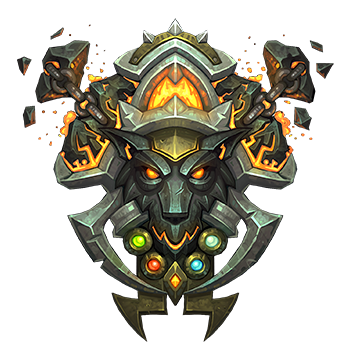

We hope you’ve enjoyed this early preview of our approach to class and specialization design in World of Warcraft: Legion. We’ll continue our review tomorrow with a look at Warriors, Monks, and Druids.

